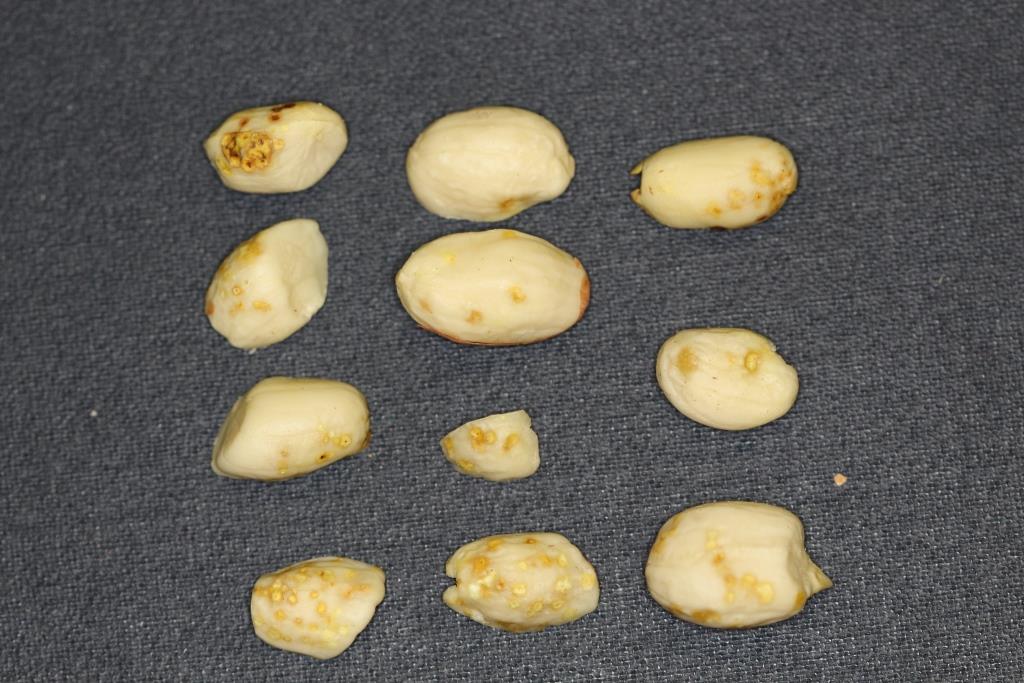Here is an update from Mark Abney, Extension Entomologist, on burrower bug damage:
“We made it through the first couple weeks of the 2014 peanut harvest without hearing too much about burrower bugs, and I thought hopefully our prediction of heavier burrower bug damage this year was going to be wrong. Over the last two weeks, however, the reports of seg 2 peanuts and burrower bug damage have been coming pretty consistently. This peanut crop had a lot of challenges, and the samples that I have seen from seg 2 loads have a variety of problems including burrower bug damage.
We know from previous work in South Carolina and Georgia that hot, dry years increase our risk of damage, and light trapping at several locations in GA this summer revealed the presence of the insect.
It has also been shown that conventional tillage and the application of granular chlorpyrifos at early pegging can suppress burrower bug injury. There was a good amount of granular chlorpyrifos applied for lesser cornstalk borer this summer, and we now have a chance to see how well the product worked at reducing damage from burrower bugs.
With the help of buying points, County Agents, and growers we have an opportunity to discover additional risk factors that lead to damaging populations. We are currently developing a survey that will help us identify problem fields and the production practices used there. From this information we should gain a greater understanding of the geographic distribution of the pest and hopefully provide growers with better answers to questions like, “Why did this field have burrower bug damage while a field a couple miles down the road in the same county did not?”
It is important to remember that burrower bugs have been around for a while, and enough research has been done to show that there will be no quick, easy solutions to this pest problem. The pictures below show the damage characteristic of burrower bug feeding. Note the sunken, circular spots where the insects inserted their stylets (mouthparts) to suck juices from the kernel.”



Source : uga.edu